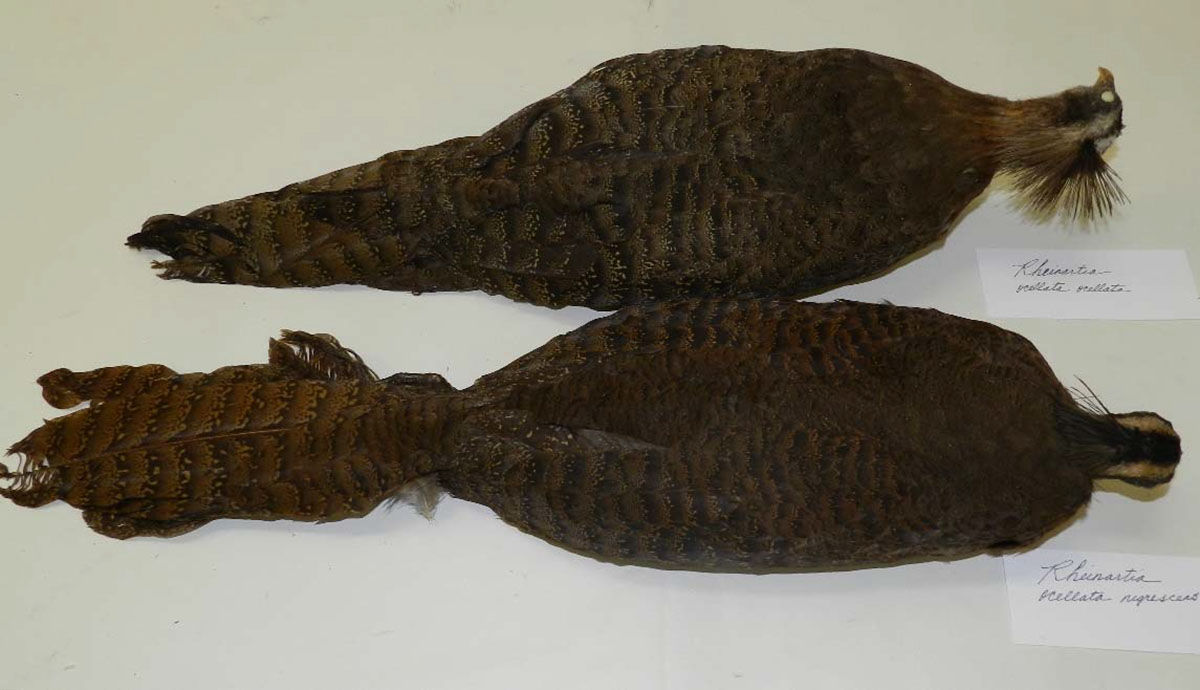
by James Pfarr
Umwelt: pronounced oom‐velt, German word meaning – the environment or perceived world, from Naming Nature by Carol Yoon.
Often, over the course of one’s avicultural involvement, which is continuously being subjected to an array of intrigues, both beautiful and perplexing, we periodically have those moments when clarity is like a lake’s still water at sun rise, without a ripple in sight. Then, every neuron in your cranium begins to fire, as if a GE Turbine is winding up, fixin’ to light up downtown Manhattan!
This neural explosion, on par with a 4th of July celebration, tends to awaken the 90% grey matter that’s been on siesta, jarring ideas and releasing thoughts. Concepts begin to ricochet around the mind, like a ball in a pinball machine.
Many times, I have found myself muttering, writing notes, acting as if I have spent too much time isolated on an island with a ball named “Wilson”. My poor wife is perpetually one call away from introducing me to a padded room and thinking, “I just had to marry a Bird guy!”
All the above has fueled the impetus for much of my personal avicultural endeavors, research, and quests for the truth. One of those has been taxonomic classification. I want to lay the groundwork of my journey to where I am now.
At an early age I learned that “Many things are lost for the want of asking” and with this notion, my knocking on doors and turning of stones commenced. I have been fortunate enough and privileged with being granted access to many of the world eminent archival museums; often either out of pity, being viewed a country bumpkin, by using my charming wit & good looks, or simply because I wouldn’t shut the hell up and it was their only way to do so.
Whatever the reason, my expeditions to these museum vaults of unimaginable treasures, with some having the same level of mystery – and looming questions – being comparable to being exposed to “The Roswell Incident”. These forays have forever changed my course and perspective on many facets associated with aviculture and its avenues of understanding.
From these visits a hidden, maybe overlooked, propensity emerged, one that I had taken for granted, but were blatantly clear to those around me: I had a peculiar ability of recognition for subtlety, especially plumage differences, beyond the normal awareness. This has been a gift, and, in the same breath, a curse. Yes, I know, an oxymoron, but as much as it has been a benefit on many accounts, and I would be at a loss without, it is equally inhibiting on others.
This “genetically encrypted conflict” has led me to discoveries that aided in developing some of the most significant to date research in Galliformes, and opened doors to new, even more vexing questions than when this crazy damned journey started with the conception of “True Pheasants” in early 2000. In the course and wake of this evolving roller coaster, avian science has progressed more in the last 20 years than it has in all its previous compilation.
This paper is the cumulation of my journey of struggles, revelations and vindication concerning taxonomic classification using phenotypic concepts.
It is with humility and a level of emotion, that I am presenting many previously not seen or known facts which have emerged from my chasing down rabbit holes, launching as if from a trampoline, and my foray into academia, altering acceptance, systematic clarification, and has been observed and utilized in a peer reviewed article which is included.
You may wonder why I place so much on this last sentence, but truthfully, it really is the “soul” of this writing and its contents. It affects everything from nomenclature status, conservation, bio‐politics to a plethora of other issues, but which we will let be for now.
A major point I wish to lay on the table that is directly related and intertwined with the enclosed peer review, is the current tug of war which is rocking the boat with such force it has caused a rift the width of the Sahara between the two
“Titans of Classification” – basically phenotype vs. genotype.
One group subscribes to Historical Assessment methods established by the long standing “Tobias” system of classification which uses phenotypic analysis and they have dug in against the “Still New” system of utilizing the arising, endless methods of DNA analysis.
Why is this such a conflict you may wonder? Well, advancement in science is like opposing viewpoints between husbands and wives. Each classification system has their noted points, however the one thing that can’t be contested in the world of genetic breakdown is this: close subspecific genetic relation for all genus designations show no marker variation on a genotype level! In other words, when comparing DNA at the genus level, closely related subspecies show no differences at that loci, even though there are phenotype differences.
What does this mean and why does this matter? There is not enough time and space to adequately go into depths of this subject, but in short, the universally accepted designation for a species is based on the proven, historical standing rule that 70% of a population’s identifiable phenotype and biometrics (characteristics) gives justification for its nomenclature. Now, there is a lot more that goes with this, but that’s the gist of it. Attempting to elaborating any more would be equivalent to throwing a hand full of flour into the air and then trying to identifying singular grains.
So, we have arrived at the end of a cul‐de‐sac, looking past the curb, and this is where the story really starts and gets interesting. Now, getting back to close genetic relation/alliance. We as a society are eager to invent, establish a legacy, or simplify (because putting effort into research requires work). It’s easier to lump (species), than to split, and this is exactly what is taking place with DNA based analysis. DNA/mitochondrial, thread line analysis and about 50 other types of DNR analysis do not differentiate between close genus members, so it’s easy to lump species together when the tool you are using (DNA testing) doesn’t separate closely related taxa. This is important because lumping has residually affected the taxonomic status, and possible protection, of pheasants such as the Vietnamese, Edwards, Imperial, many of the True Pheasants, Crawfurd’s and Lineated Kalij, Double/Single Bar Palawan Peacock, along with Blood, Koklass, and Silver subspecies; with all of this being in the scope of DNA, to overthrow their numerical subspecies standings. Do you now see where this preamble has led us and what I am trying to pin down?
The attached peer reviewed article (Species rank for Rheinardia ocellata nigrescenus), that trampolined off my work in 2011 (See photos), has used the basis of the “Tobias System” (see attached article), justifying the proposed separation of the two existing forms of Rheinhardia (Crested Argus Pheasant). The species mentioned in the previous paragraph (all earned accepted nomenclature under the same Tobias process and system) have either been stripped of standing, or are currently being contested via genomic marker evaluation. DNA analysis has unlocked some secrets, but we cannot afford to ignore the taxonomic picture as a whole, abandoning good tried and true science. If science in a peer reviewed article accepts Tobias for Rheinhardia, then they should also accept the Tobias method for the other species ‐ you cannot use one system for one determination, and the other system when it suits your purpose.
The bottom line is:
There are 2 lines of thought on subspecies designation
#1 genotype (DNA analysis)
#2 phenotype (Tobias)
Subspecies based on phenotype have no genetic differences at the genus level
People want to lump, but this would eliminate many long standing, proven (and in some case, endangered) distinct sub species
Subspecies are important because they differ taxonomically in a geographic subdivision and with indiscriminate habitat destruction, one of these taxa may provide the only remnants of the species
Let your mind decide whether you need a therapist, or are still in this universe, in need of a margarita, and while you contemplate, I will start my next writing while waiting on the couch in the lobby, convinced I just got educated by Yoda, as I listen to “Jose Cuervo is a friend of mine”…
"WE CAN ALLOW SATELLITES, PLANETS, SUNS, THE UNIVERSE, NAY WHOLE SYSTEMS OF UNIVERSES, BE GOVERNED BY LAWS, BUT THE SMALLEST INSECT, WE WISH TO BE CREATED AT ONCE BY SPECIAL ACT."
- Charles Darwin 1871
I wish to extend my deepest appreciation to Ron and Cindy Johnson, for endless things, but mostly for always taking the time to read through my gibberish so I do not look the fool, for being friends of a caliber that few ever have the likes of in a lifetime. And, to Ron directly for his insight, support, often times my quite collaborator, and the volumes of knowledge in both their heads that have aided in many of my thoughts.
I would like to thank the American Museum of Natural History in New York, especially Paul Sweet, Collection Manager, Department of Ornithology for allowing me access to their specimen material. The following are skin photographs of Crested Argus Rheinardia ocellata and nigrescens. Both taxa are represented in each photo showing different views and sexes. Please note the characteristic differences between the two taxa’s in feather structure, color, pattern, size and shading. These are all phenotypic differences as described and measurable in the Tobias system (see next article). Geographical zones, voice, and behavior differences are also scored in this system. The elevation to species status or recognition of a taxon as a valid subspecies has tremendous conservation, political and economic implications on the international level. The existence of species like Edwards and Imperial, literally depend on how they are perceived taxonomically.

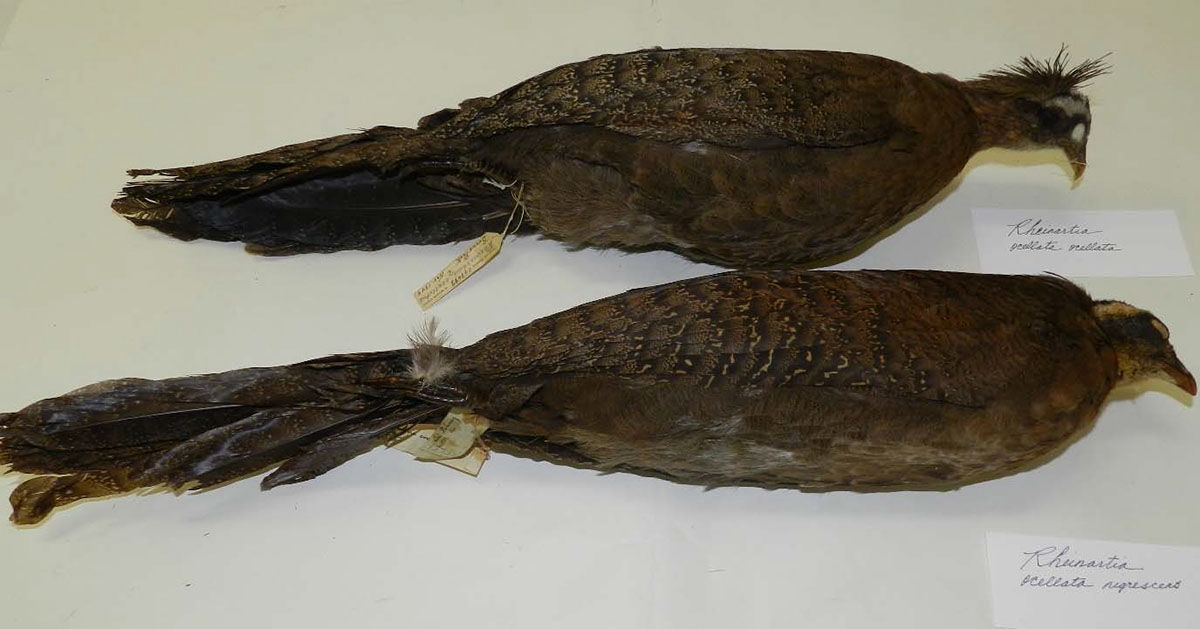

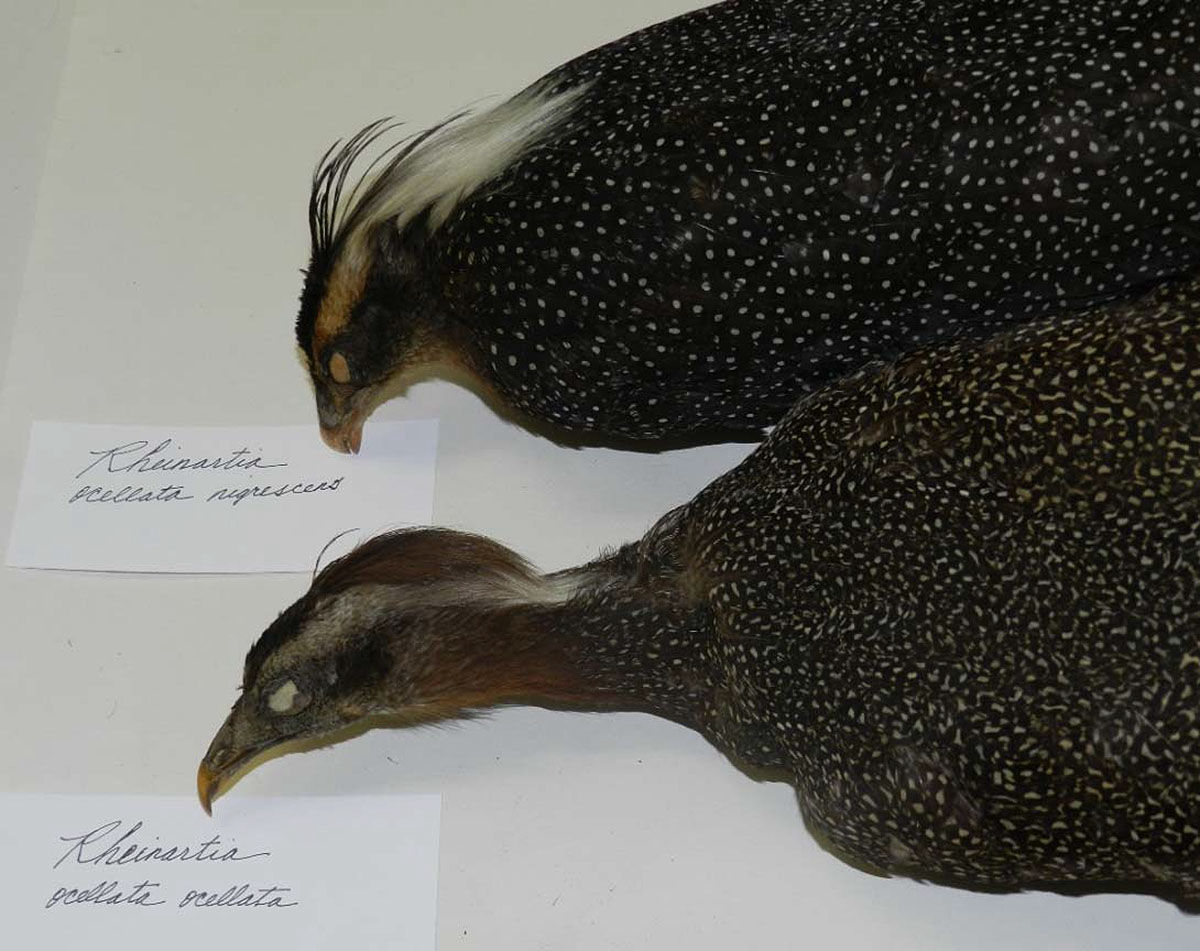
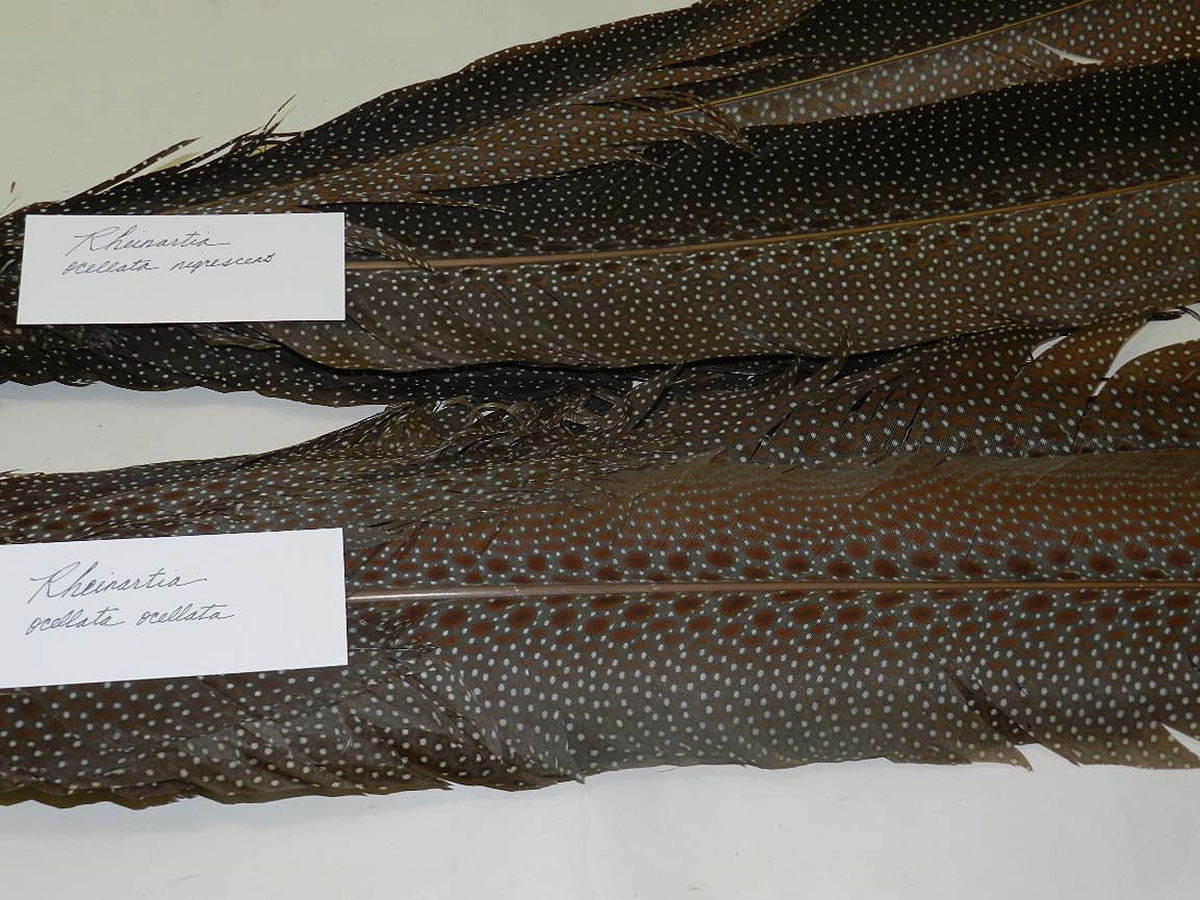
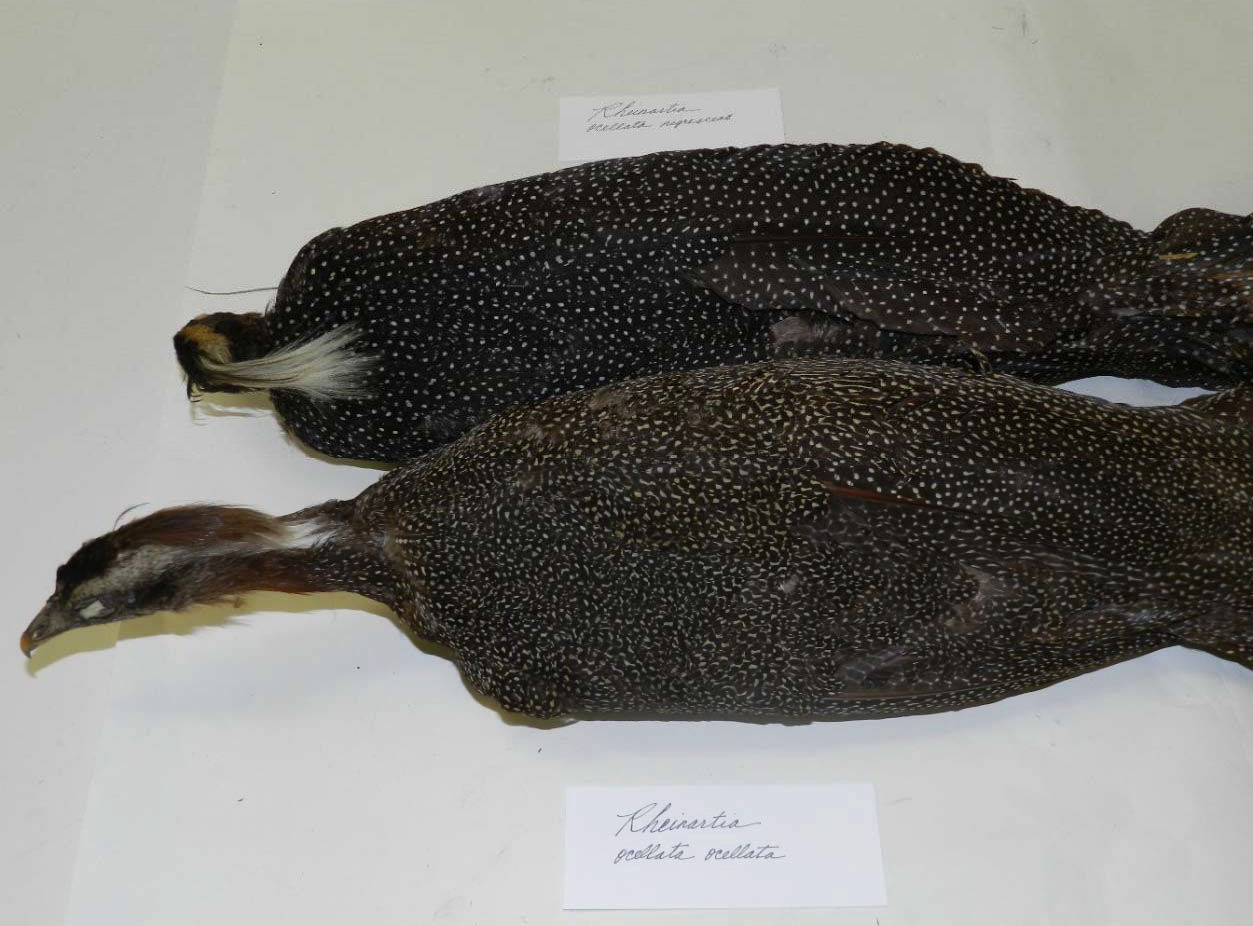
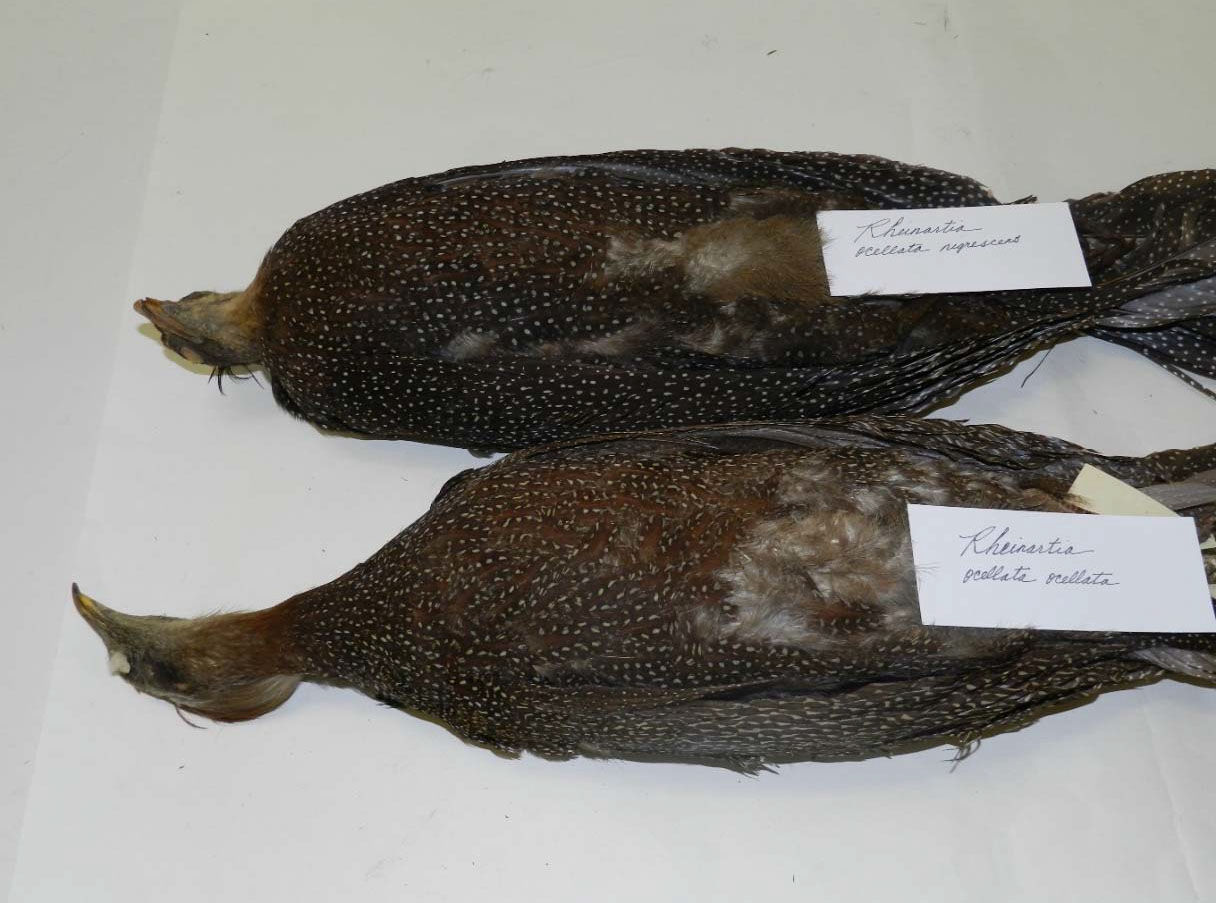
Drag & Drop Website Builder